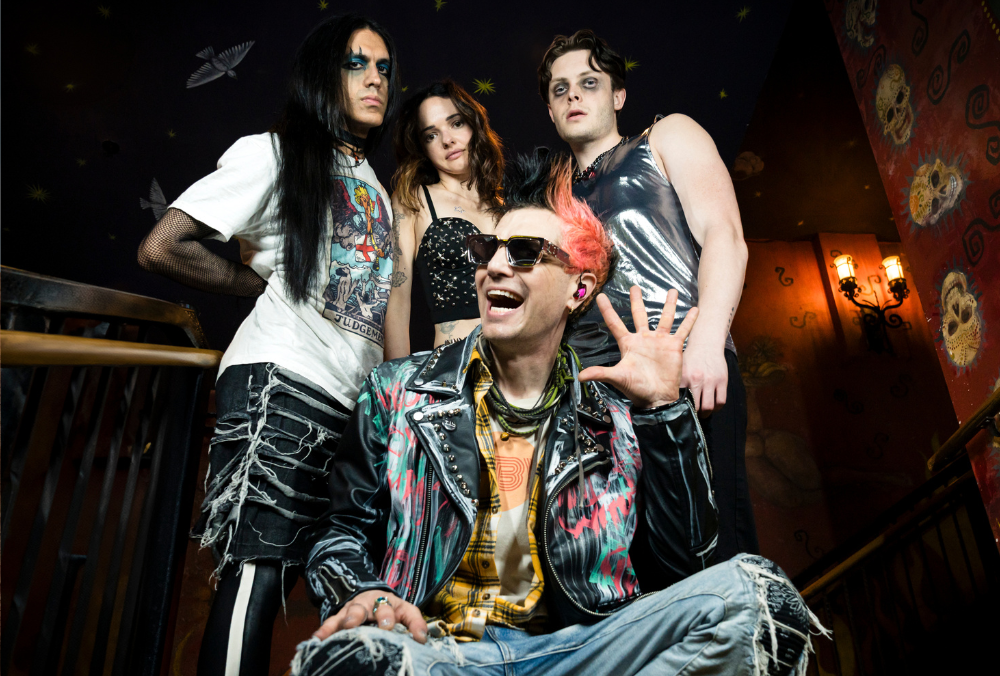It's not an uncommon story: girl friends who hug or kiss with an abandon that boys would never take for granted because when girls are affectionate with each other, it simply means less. Female friendships are allowed to be more physically and emotionally intimate without accusations of homosexuality. This may offer some a degree of safety, but for others, that casual dismissal of romantic female relationships can also be a dismissal of a hard-accepted identity.
As media plays such a large role in influencing lives--sometimes even introducing people to the concept of LGBTQ+ and other identities--it is now more important than ever for media such as anime to portray those stories with care. As anime continues to handle the topic of women being in romantic relationships, it is a responsibility to be sure that these stories, also known as 'yuri,' are nuanced and varied, and avoid the pitfalls that have emerged in the genre over the decades.
The History and Meaning of Yuri
Yuri anime and manga is content that includes or focuses on romantic relationships between girls and women, with the literal translation being 'lily.' Yuri content has fluctuated in and out of popularity since all-female boarding schools became common around the turn of the 20th century and it began to appear as the subject in widespread books. As anime and manga such as The Rose of Versailles became popular in the women's movement of the 1970s, characters such as Lady Oscar inspired a whole new wave of interest in yuri content, with more and more fictional women gradually appearing in stories focusing on female relationships.
As with all genres, yuri has its sub-genres, one of which ended up becoming the root of many of the problems with yuri today: shoujo-ai. Shoji-ai originally was used to differentiate works that didn't contain sex, but the term has taken on a new meaning as a sub-genre of yuri that doesn't contain an explicit confirmation of the relationship. It may capture the emotion, but it does nothing to actually prove beyond doubt that this is anything beyond girls being friends, and here is where the issue of 'yuri-baiting' occurs.
The Problem With Yuri-Baiting
The largest problem with yuri as it stands now is that most yuri is simply not yuri. Many favorite relationships are not real and will never become so. However, shows love to take female characters and make it seem like they have romantic feelings for each other without ever actually pulling through, baiting fans with yuri potential and then dropping the ball. Anime such as Puella Magic Madoka Magica and Sound!Euphonium both make it seem like a particular yuri pairing has the potential to be real LGBTQ+ representation, and will draw official art, sell figures, or simply write the show in a way that makes the girls seem like a couple. This profits off people who are desperate for representation while not planning on ever delivering.
For example, many, if not most, Madoka Magica fans can agree that Akemi Homura's feelings for Kaname Madoka go beyond platonic. Scale figures of Miki Sayaka and Sakura Kyoko will even be sold separately but with interchangeable arm parts to allow them to be joined together--and only with each other--yet without an official declaration of romance, this can be brushed aside as girls being naturally more affectionate. Even an official declaration of feelings sometimes isn't enough. In Sound!Euphonium, the main character offered up a "confession of love," only for them to focus on the other's unrequited crush on a male teacher and end the show as platonic friends.
This can be further seen in official artwork for shows such as Princess Principal, which once again does not actually have two women in a relationship but feels free to capitalize on how the concept of yuri will sell the show. The artwork of the characters Ange le Carré and Princess Charlotte is full of romantic and even sexual undertones and the show contains romantic tension, but without a kiss or romantic acknowledgment, their relationship will never be considered true yuri. This allows the show to maintain the audience who would frown upon LGBTQ+ representation while still baiting an audience who are willing to accept a relationship that won't ever be real.
Other strong offenders of yuri-baiting include Izetta: the Last Witch, Higurashi: When They Cry and many Idol shows that have all the hallmarks of being shoujo-ai without the actual girls' love. Though many of these shows are still completely enjoyable, the fact that they depict what seem to be romantic relationships between girls and women, use that to sell merchandise and attract viewers but then never actually have that relationship come to fruition is cruel towards LGBTQ+ viewers who are searching for stories to connect with.
True Yuri Representation?
Unfortunately, many shows that are official 'yuri' do not stand up to scrutinization either. Yuru Yuri features very young girls where any sexualization comes off as inherently wrong, and the show helps this along by making much of the sexualization further taboo by making it incestuous or simply lecherous. Any feelings these girls have towards each other are, at the end of the day, meant to be light-hearted and not taken seriously as LGBTQ+ representation. Other shows with explicit sexual actions between women might technically be representation, but are clearly meant for the male gaze or are extremely predatory in a way that makes them an ill-fit for representation, such as Citrus.
The sub-genre of Class S occasionally produces a yuri pairing that seems to cement itself as real, but Class S has many of its own issues. Class S shows take place at those all-female boarding schools that began to inspire yuri works in the early 1900s, and the all-female casts lend themselves easily to yuri. However, even in shows such as Strawberry Panic where the characters kiss and seem to make themselves a real pairing, the idea that they will leave the school and thus 'graduate' from their desires towards other women is threaded into the narrative, much in the same way that girls might be expected to 'experiment' with their sexuality in college but ultimately settle down with a man.
Yuri Moving Forward
Fortunately, for all the negative content out there with yuri representation, there have been strides forward, as well as anime from decades past that continue to set an example. While Revolutionary Girl Utena is set in a Class S scenario, the plot required the heroines to break out of the 'egg' they have been trapped inside in order to find each other and live happily, and they share a passionate kiss in the movie to solidify their romantic attraction. Shows such as Whispered Words explore girls who are learning about their sexualities as they go, and offer true shoujo-ai while still being yuri with characters who identify as being attracted to girls while not including explicit sexual content. More recent works such as Bloom Into You, Kase-san and the Morning Glories and Adachi and Shimamura are yuri anime where the characters are unmistakably queer and, even more importantly, taking that attraction beyond the schoolgirl setting to show that their attraction is valid far past the stage they should have 'grown out of it.'
Like any media representing an oft-oppressed community, yuri has a tumultuous history and is far from perfect today. Sub-genres such as shoujo-ai and Class S have allowed yuri to become bait for people searching for representation. When the two girls or women are truly in a relationship, it is either often littered with abusive elements, created for the male gaze, or destined to be over when the couple leaves the environment of an all-girls school. While yuri-baiting in shows such as Madoka Magica has drawn a large audience, however, there are shows with true yuri couples with promising futures, and as societal acceptance of the LGBTQ+ community increases, the ability to create shows with representation also grows. Yuri is moving in the right direction and will continue to do so as audiences demand fairer representation as society evolves to be more accepting of yuri and queer women in real life who want to exist beyond the scope of fiction.
About The Author

